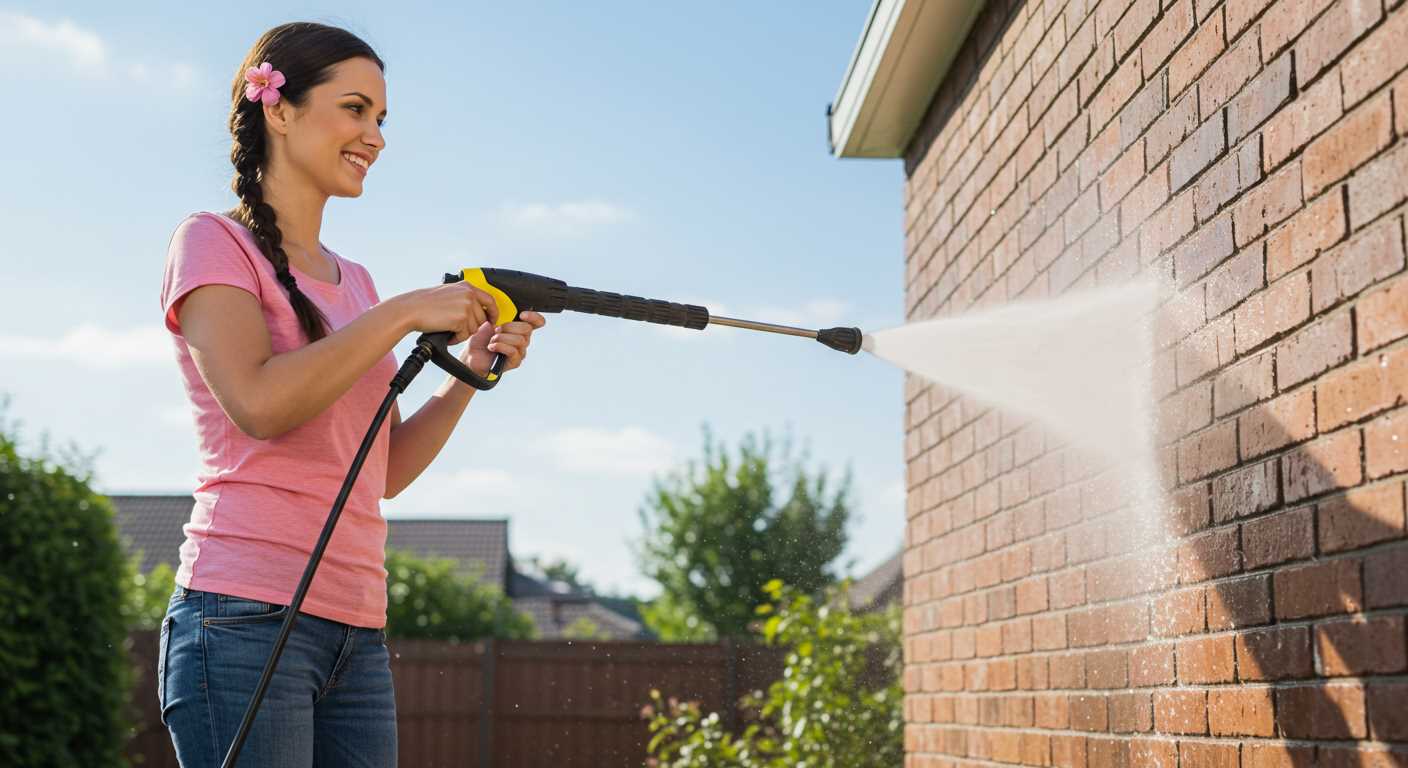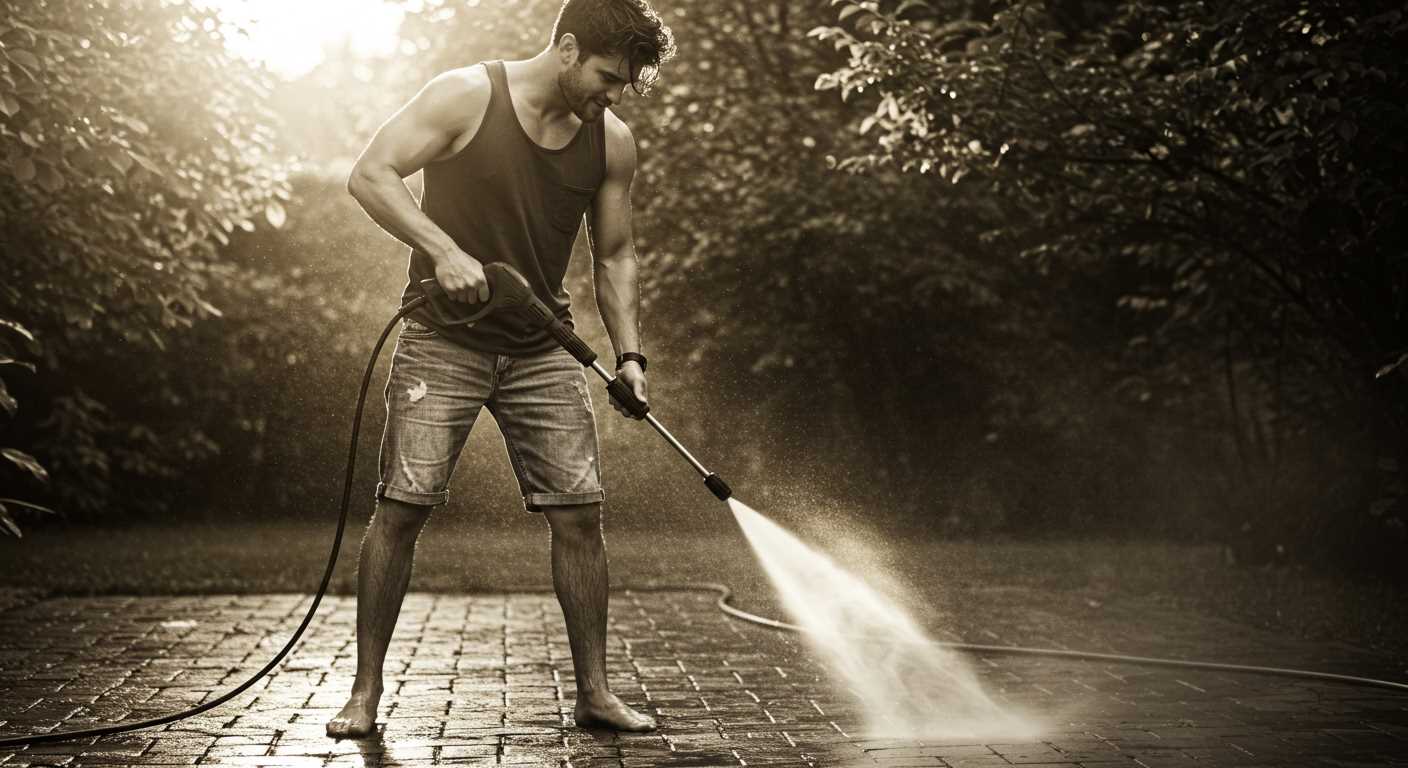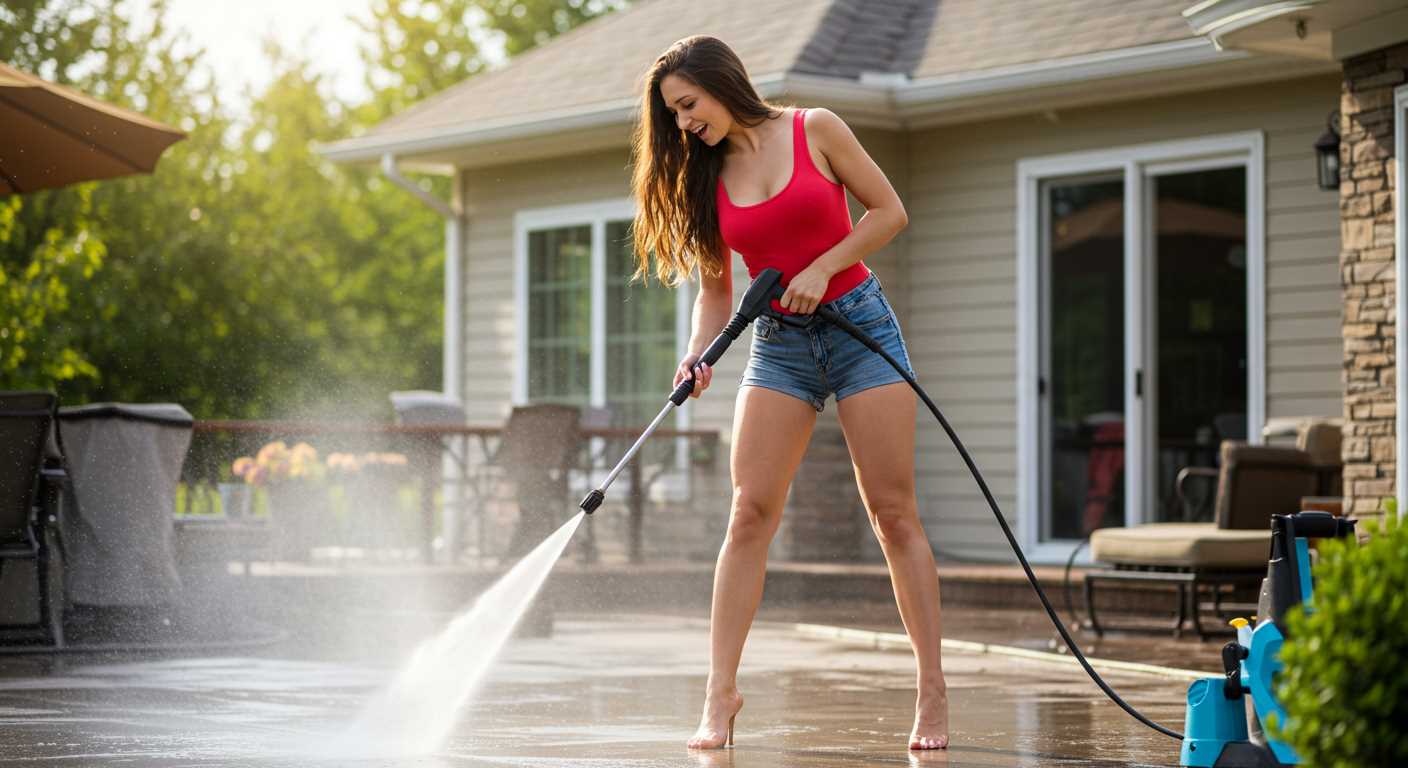




Begin with the right adapter. Each cleaner has specific fittings, so checking the user manual is essential. Most models accept standard garden hoses, but some might require special connectors. When I first started, I learned the hard way that not all hoses fit every unit. Investing in a few universal adapters saved me time and frustration.
Before attaching, ensure that all connections are clean. Dirt or debris can lead to leaks or reduced performance. A quick wipe with a cloth goes a long way. In my experience, a clean connection prevents headaches down the line. Once the fitting is secured, turn on the water supply slowly to check for any leaks.
After securing the water line, it’s time to attach the nozzle. Choose the right one based on the task at hand. For instance, a narrow nozzle works well for tough stains, while a wider one is better for rinsing. I remember the first time I used the wrong nozzle; it took twice as long to clean the surface. Matching the nozzle to the job ensures efficiency and saves water.
Finally, always check the pressure settings. Some units offer adjustable pressure, allowing for more delicate tasks. I once made the mistake of using full pressure on a wooden deck–let’s just say, it wasn’t pretty. Adjusting the settings based on the material being cleaned can preserve surfaces and achieve better results.
Choosing the Right Hose for Your Pressure Washer
Selecting the appropriate tubing is a game changer for maximising performance. Opt for a robust, high-quality option that withstands the pressures and demands of various cleaning tasks. I once used a flimsy model that kinked under pressure, leading to a frustrating experience. A durable choice will save time and effort in the long run.
Length and Diameter
Consider the length and diameter carefully. A longer piece provides flexibility in movement, especially for larger areas, but can reduce pressure if too lengthy. Aim for a diameter that matches the specifications of the equipment; typically, a 1/4-inch or 3/8-inch diameter works well for most units. I’ve found that using a wider diameter for higher PSI machines significantly improves water flow, enhancing cleaning efficiency.
Material and Flexibility
Look for materials that resist kinks and abrasion. Rubber and reinforced PVC are excellent choices. I’ve had great success with rubber hoses that remain flexible even in colder temperatures. They’re less likely to crack or become damaged over time. Lightweight options are tempting but often compromise durability, so balance weight with sturdiness.
For those in the Castro Valley area, exploring local options can yield great finds. Check out this pressure washer castro valley ca resource for tailored recommendations.
Lastly, consider the connectors. Ensure they fit securely to prevent leaks. I once faced a messy situation due to poor fitting, which made a simple task a lot more complicated. Investing in quality connectors pays off in the end.
For enthusiasts of home preserving, check out this informative guide on how to can fresh green beans without a pressure cooker. It’s a great way to add value to your kitchen skills.
Preparing the Pressure Appliance for Hose Attachment

Ensure the unit is turned off and unplugged. This prevents accidental activation during setup. Next, inspect the water inlet for any debris or damage. A clean inlet allows for optimal water flow and prevents unwanted leaks.
Fill a bucket with fresh water to test the connection before attaching the tubing. This step guarantees that there are no leaks in the system. If leaks are detected, replace washers or seals as needed. I recall a time when I skipped this check, leading to a messy situation. Lesson learned.
Check the connections on the unit’s end for compatibility with the selected tubing. Some models have quick-connect fittings, while others may require threading. Having the right adaptors handy can save time. In my experience, always keep an assortment of fittings; they’ll come in handy more than once.
Inspect the tubing for kinks or wear. A compromised line can lead to reduced performance. Once confirmed, attach the line securely, ensuring it’s tightened adequately but not overdone, as this can damage the fittings.
Before starting, fill the unit’s tank with clean water. Avoid using anything other than what’s specified by the manufacturer. In my early days, I made the mistake of using contaminated water, resulting in clogs and costly repairs.
Finally, prime the system by turning on the water supply before powering up the device. This ensures that the internal components are lubricated and ready to function correctly. A little preparation goes a long way in achieving effective results.
Locating the Hose Connection Point
Identifying the right connection point is a straightforward task but requires attention to detail. Typically, the inlet for the water line is positioned at the front or side of the unit, often marked with a clear label. Here’s how to find it efficiently:
- Inspect the unit for a threaded fitting. This is where the water supply attaches.
- Look for symbols or labels indicating the water inlet. These often appear near the connection point.
- Check the user manual for diagrams. Manufacturers usually include clear visuals showing the exact location.
From my experience, some models might have a protective cap over the inlet. If present, simply remove it before proceeding.
Additionally, be aware of any potential obstructions near the connection site. Ensure there’s enough space to attach the line securely without straining the fittings.
Once the inlet is located, it’s a good practice to inspect it for any signs of wear or damage. A damaged connection point can lead to leaks or operational issues later on.
After finding the inlet, it’s time to prepare the water line for a seamless attachment. This ensures a reliable flow and optimal performance during operation.
Attaching the Hose Securely
Ensuring a tight fit is paramount for optimal performance. After years of dealing with various models, I’ve found that using the right technique can prevent leaks and enhance the overall efficiency of the equipment. The first step is to examine the fittings on both the accessory and the unit. They should be clean and free of debris. Any contaminants can hinder a proper seal.
Steps for Secure Attachment
1. Align the threads carefully. Start by positioning the fitting at a slight angle to the connection point. This helps to avoid cross-threading, which can lead to damage.
2. Hand-tighten the connection. This approach allows for a snug fit without overexerting force, which could strip the threads.
3. Use a wrench if necessary. For a more secure closure, employ a wrench, but remember not to overtighten. A quarter turn is often sufficient to ensure a watertight seal.
Common Issues and Solutions
| Issue | Solution |
|---|---|
| Leaks at the joint | Check for debris and ensure threads are aligned properly. |
| Difficulty in attachment | Inspect the fittings for damage or wear; replace if necessary. |
| Fittings coming loose | Consider using Teflon tape on the threads for added security. |
Taking the time to secure the connection properly will not only enhance the lifespan of the equipment but also improve the quality of the cleaning experience. A dependable connection can make all the difference in achieving the desired results.
Checking for Leaks After Connection
Inspect connections thoroughly after securing the fittings. A small leak can lead to significant pressure loss and can damage equipment over time. Here’s a systematic approach to ensure everything is sealed properly:
Visual Inspection
- Examine all connection points for any signs of water seepage.
- Look for dampness around the fittings; even a slight wetness indicates a potential issue.
- Check the condition of any seals or O-rings; replace them if they appear worn or damaged.
Functional Test
- Turn on the water supply and let it run for a few moments.
- Activate the motor briefly to build pressure, but don’t start cleaning yet.
- Observe for any leaks during this period; a steady stream of water indicates a problem.
If leaks are detected, turn off the water supply and depressurise the system before attempting any adjustments. Ensuring a tight seal will not only enhance performance but also prolong the lifespan of the equipment.
Disengaging the Hose After Use
After finishing tasks, ensure to turn off the machine and release any remaining pressure before removing the water line. This prevents accidental sprays that could lead to injuries or damage.
For a safe disconnection, follow these steps. Firstly, locate the quick-release fitting on the end of the tubing. Grasp the outer collar and pull back while gently twisting the connector. This action will disengage it from the inlet. Always be cautious, as some residual water may still escape.
Once detached, inspect both ends of the line for any signs of wear or damage. If any fraying or cracks are present, consider replacing the tubing to maintain optimal performance for future use. Store the discarded line in a dry area to prevent mould and mildew accumulation.
Also, remember to clear any debris from the fittings before reattaching. This practice prolongs the life of the components, reducing the likelihood of leaks during the next session.
Finally, after storing the equipment, consider draining any remaining water from the system. This step can prevent freezing in colder conditions, ensuring the unit remains in prime condition for the next operation.
FAQ:
What tools do I need to connect a hose to a pressure washer?
To connect a hose to a pressure washer, you typically need a garden hose and possibly a hose adapter, depending on your pressure washer model. Ensure you have a wrench if the connection is tight and a bucket or container to catch any water that may spill during the process.
Can I use any garden hose with my pressure washer?
While many garden hoses can be used with pressure washers, it’s advisable to check the pressure rating of the hose. A hose rated for higher pressure is recommended to avoid leaks or bursts during operation. Also, ensure the diameter of the hose matches the specifications of the pressure washer for optimal performance.
What steps should I follow to connect the hose properly?
First, ensure the pressure washer is turned off and unplugged for safety. Attach one end of the garden hose to the water inlet on the pressure washer, tightening it securely. Attach the other end of the hose to your water supply. Turn on the water supply and check for leaks before starting the pressure washer. Make sure the connections are firm but avoid overtightening, which can damage the fittings.
Is it necessary to use a filter when connecting a hose to a pressure washer?
Using a filter is not strictly necessary, but it is recommended. A filter can help prevent debris from entering the pressure washer, which can cause damage or reduce efficiency. If your pressure washer does not have a built-in filter, consider using an inline filter on the garden hose to protect the unit.
What should I do if the hose doesn’t fit the pressure washer?
If the hose does not fit the pressure washer, check if you need an adapter to make the connection. Many pressure washers come with various fittings to accommodate different hose sizes. If you can’t find an adapter, consider purchasing a new hose that matches the specifications of your pressure washer. Always consult the manufacturer’s guidelines for compatibility.
What tools do I need to connect a hose to a pressure washer?
To connect a hose to a pressure washer, you typically need a garden hose, a pressure washer attachment, and possibly a hose connector if your hose doesn’t fit directly. Ensure that the hose is compatible with your pressure washer model. You might also need a wrench for tightening connections to prevent leaks.
Can I use any garden hose with my pressure washer?
Not all garden hoses are suitable for pressure washers. It’s best to use a hose that is rated for high pressure, usually at least 300 PSI. Standard garden hoses may not withstand the pressure and could burst. Always check your pressure washer’s manual for recommendations on hose specifications to ensure safe and proper operation.






.jpg)


